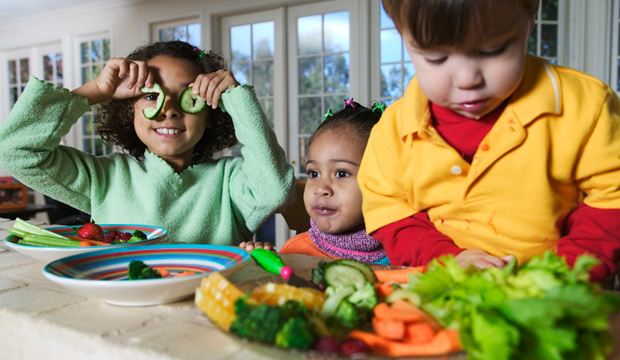Bottom line: “Eat your fruits and veggies!”
As cliché as it may sound, there really are some things in life that are easier said than done, such as healthy eating.
Parents instruct and prompt their children to eat fruits and veggies, but sometimes to no avail. Growing up, I heard “eat your fruits and veggies” day in and day out, but found that if I spread them around my plate, I could occasionally fly under my parents’ radar. Even as health-conscious adults, it is often still difficult to eat the recommended daily amounts of nutritious foods.
In an effort to promote healthier eating, the U.S. Department of Agriculture (USDA) passed revised nutrition standards for school meals in 2012, part of which mandated that children choose a fruit or vegetable at each meal. Thus, schools across the nation have been required to serve healthier school lunches that offer these items.
There are differing views regarding the efficacy of these new requirements and programs.
A recent New York Times food blog cites a Public Health Reports study which found that, even though more children selected fruits or vegetables after the rules went into place, actual consumption of these foods decreased. Students from the two northeastern elementary schools supposedly disposed of their fruits and vegetables at a rate 56% higher than before.
 However, there is a plethora of evidence and research that suggests quite the opposite. A study funded by the Robert Wood Johnson Foundation (RWJF) and conducted by the Rudd Center for Food Policy & Obesity at the University of Connecticut shows that students are actually throwing away less food now than before the standards went into effect. This RWJF simple infographic notes that 95% of schools nationwide meet the healthier meal standards prescribed by USDA in 2012 and that positive progress has been made toward kids eating healthier within school settings.
However, there is a plethora of evidence and research that suggests quite the opposite. A study funded by the Robert Wood Johnson Foundation (RWJF) and conducted by the Rudd Center for Food Policy & Obesity at the University of Connecticut shows that students are actually throwing away less food now than before the standards went into effect. This RWJF simple infographic notes that 95% of schools nationwide meet the healthier meal standards prescribed by USDA in 2012 and that positive progress has been made toward kids eating healthier within school settings.
And, in a Bridging the Gap research brief, the study focused on how students reacted to updated school lunch nutrition standards and notes that, while students initially complained about the new rules, very few were actually discarding the nutritious items.
Regardless of whether you believe these new school lunches are “working” or not, here is one important takeaway: have conversations with the school-aged children in your life, as well as with your families and friends, about the benefits of eating healthily and ways to take action. Since children form food preferences early in life depending on what they’re exposed to, healthy lifestyles and nutritious meals are not limited to school cafeterias, but also need to be practiced at home and everywhere in between. Harvest for Healthy Kids programs conducted a pilot study that introduced preschoolers in Head Start centers to nutritious foods by offering them small samples of the target foods and found that willingness to try these foods increased for all groups that participated.
In response to studies like the one featured in the New York Times, Kaiser Permanente dietitian, Stephanie Hancock, advises adults to role model good eating habits for kids, encourage cooking and gardening and designate special colors to special days (e.g. on green day, eat foods like green apples, broccoli and kale).
Perhaps these tactics will help disrupt that “easier said than done” cliché and eating your fruits and veggies will be fun and easily integrated into your everyday life and the lives of those around you. Try it out for yourself and see!



